This piece is part of a series titled “Nonstate armed actors and illicit economies in 2022” from Brookings’s Initiative on Nonstate Armed Actors.
Alongside the Taliban’s takeover of neighboring Afghanistan, 2021 in Pakistan was marked by a clear resurgence of Tehrik-e-Taliban Pakistan (TTP), a terrorist group closely affiliated with the Afghan Taliban and responsible for killing tens of thousands of Pakistanis between 2007 and 2015. The Afghan Taliban’s rise to power — considered a “strategic win” for Pakistan and publicly welcomed by several politicians and officials — provided an unmistakable boost to the TTP. As the TTP has resurged, the Pakistani state has shifted its narratives and policies toward the group, while details on the TTP’s attacks have remained frustratingly opaque.
An uptick in terrorist attacks
According to the Pakistan Institute for Peace Studies (PIPS), 207 terrorist attacks took place in Pakistan in 2021 — an increase of 42% relative to 2020. 335 lives were lost in these attacks. PIPS notes that the TTP alone was responsible for 87 attacks, an increase of 84% relative to 2020. The TTP itself claimed 282 attacks in 2021 and said that it had killed more than 500 law enforcement personnel; it claimed an additional 42 attacks in January 2022.
Both sets of numbers are low relative to the number of terrorist attacks during the height of the TTP insurgency (2,586 terrorist attacks and 3,021 fatalities in 2009, according to PIPS data). After the Pakistani military began its Zarb-e-Azb operation against the group in 2014, attacks declined sharply. Yet the increasing violence in 2021 compared to 2020, when the TTP began to regroup, is clear.
The TTP largely appears to have focused its recent attacks on security personnel in Pakistan’s western border regions (though it also targeted a polio vaccination team in December). This is in line with the change in the group’s manifesto in 2018, when it said it would focus its violence against Pakistani military and intelligence targets rather than civilians (the hallmark of its earlier attacks). In January, the group also claimed an attack on a police checkpoint in Islamabad.
As a result of the remote location of many recent attacks, and the fact that most targets are security personnel, public information on them has been tightly controlled by the Pakistani state. It largely comes from short, oblique official statements from the Inter Services Public Relations (ISPR) arm of Pakistan’s military, which Pakistani media then tends to reproduce. This is part of a qualitative shift in how Pakistan’s erstwhile tribal areas and terrorist attacks have been covered since the Zarb-e-Azb operation began: information access was clearly limited during the operation, and the control of information has continued since, including through the recent increase in attacks.
Secret talks, a brief cease-fire, and a return to violence
In October, Prime Minister Imran Khan revealed during a television interview that his government was talking with the TTP, saying that “there are different groups which form the TTP and some of them want to talk to our government for peace. So, we are in talks with them. It’s a reconciliation process.” He noted that the talks were taking place in Afghanistan.
That talks were underway came as a surprise to parliament as well as the public, although in September the foreign minister had also hinted in an interview that Islamabad would be open to pardoning TTP members if they laid down arms and submitted to Pakistan’s constitution. (An official later said no final decision had been made on amnesty.)
Talking to the TTP is in line with Khan’s longstanding support for a negotiated settlement with the insurgents — he also supported peace talks as an opposition politician during the height of the insurgency. But the news was criticized widely by opposition parties, especially given the secrecy of the process and lack of consultation with parliament.
The Afghan Taliban reportedly helped with the negotiations, per Pakistani national security officials, though it denied official involvement. One outlet reported that the Taliban interior minister, Sirajuddin Haqqani (head of the Haqqani Network and designated as a terrorist by the United States), was the mediator.
In November, the Pakistani government announced a month-long cease-fire with the TTP — though it was unclear with what concessions to the insurgents. There were disputing reports on whether any TTP prisoners had been released, a key condition for the TTP. The cease-fire expired on December 9, and the insurgents immediately resumed their attacks.
The TTP’s two main demands are the imposition of sharia in Pakistan (their raison d’être) and a release of the group’s prisoners. For the Pakistani state, the former is non-negotiable; it is not difficult to see why the talks fell apart. The ISPR’s head said in January that “some conditions… were non-negotiable from our side so there is no ceasefire [right now]. We are continuing with operations and will continue till we get rid of this menace.” Also in January, a former TTP spokesman was killed in Afghanistan under unclear circumstances, leading to speculation of whether Pakistan was involved.
Yet at the same time, a number of outlets reported that the Pakistani state had quietly restarted an attempt to negotiate with the TTP.
The Afghan Taliban factor
The Pakistani Taliban has had ties with Afghan Taliban since its inception, including pledging allegiance to the Afghan Taliban’s leader as its own supreme leader. It would be fair to describe the groups as ideological twins. They have trained together, the TTP has provided foot soldiers to the Afghan Taliban, and the Afghan Taliban has provided logistical space to the TTP. Many TTP fighters escaped to Afghanistan in the wake of the Pakistani military’s offensive against the group after 2014. When the Taliban took over Kabul last year, hundreds of TTP prisoners, including senior leaders like Faqir Mohammad, were released. The TTP hailed the Taliban’s “historic and blessed victory,” calling it a victory for the “entire Muslim ummah,” and renewed its oath of allegiance.
In Pakistan, there was some (wishful) thinking after the Taliban’s takeover that the new regime would not allow the TTP to use Afghan soil to attack Pakistan — given the Afghan Taliban’s long-standing relationship with Pakistan and in the vein of its promises to the U.S. and other countries regarding terrorist groups operating from its soil. But the reality is that the Taliban is unlikely to take actions to constrain the TTP — this would displease its ranks (and encourage defections, including to Islamic State Khorasan), and preserving internal unity is its primary priority, over any appeasement of Pakistan. Mediating in talks is very likely to be the extent of its help.
After a TTP attack this week killed five Pakistani soldiers, the ISPR explicitly said that “terrorists from inside Afghanistan, across the international border, opened fire on Pakistani troops,” pointing to the TTP factor emerging as a fissure point between the Afghan Taliban and the Pakistani state.
The Pakistani state’s shifting narratives
In the last year, the Pakistani state has had head-spinning shifts in its narrative on the group, from deeming it a threat and alleging foreign funding for the group, to negotiating and considering amnesty for its fighters, to, post-ceasefire, calling it a “menace” against which the state would continue its operations (while still privately engaging in talks).
In July 2021, in a briefing to parliament, Pakistan’s Chief of Army Staff General Qamar Javed Bajwa and Inter-Services Intelligence head Faiz Hameed called the TTP and the Afghan Taliban “two faces of the same coin.” Later that month, after a TTP attack on a bus in Khyber Pakhtunkhwa killed at least 12, including nine Chinese workers, the foreign minister blamed it on “a nexus” of Afghanistan and India’s intelligence agencies. This repeated the claims of a dossier the Pakistani government released in 2020. But the rhetoric pointing the finger at other countries vanished from the public narrative during the engagement and cease-fire phase.
Wanted: Transparency, consistency, and a clear policy of accountability
The state’s shifting narratives and policies toward the TTP have left the Pakistani public poorly informed and confused about the nature of the threat the TTP poses. They have also emboldened the insurgents. The message during Pakistan’s talks with the TTP — that the state would consider forgiving those who lay down arms without prosecuting them — sent a chilling signal of a lack of accountability for TTP fighters for their atrocities against the Pakistani state and its citizens.
The TTP is clearly resurgent, and its main demand is non-negotiable for the Pakistani state. It is past time for Pakistan to take a bold, consistent approach toward the group. First, the state should be clear with its citizenry about the roots of the TTP’s extremism. As I demonstrated in my book “Pakistan Under Siege,” those roots are local: born out of Pakistan’s laws, education system, and politics.
Second, the state has the power to take on the group militarily — as it did in kinetic operations after 2014 — and to hold TTP fighters accountable for their terrorism by prosecuting them. That, with parliamentary buy-in, should form the core of the state’s policy toward the group. The question is whether the Pakistani state can summon the political courage to do so.
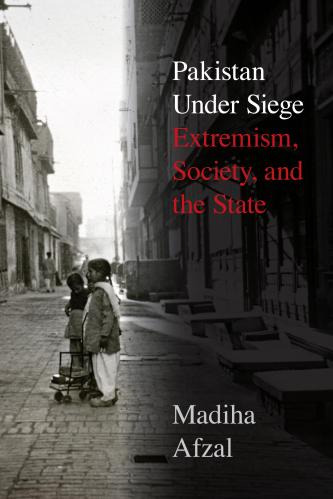
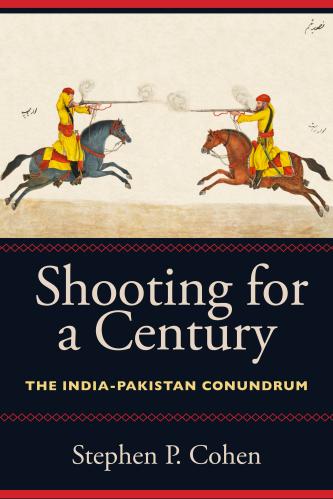

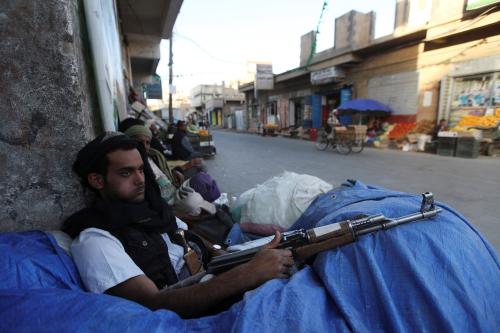
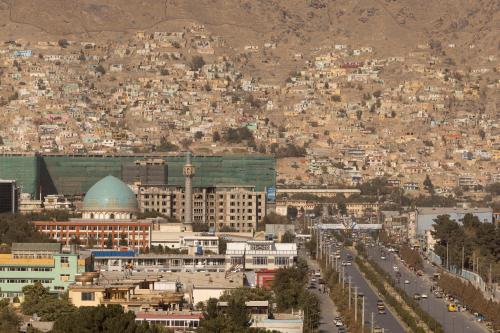
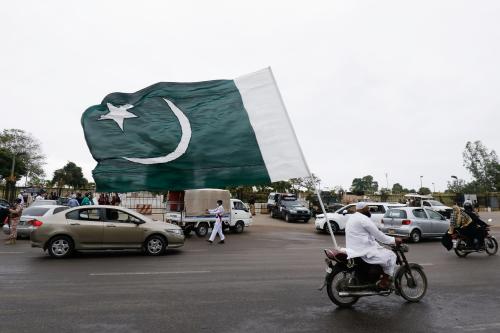

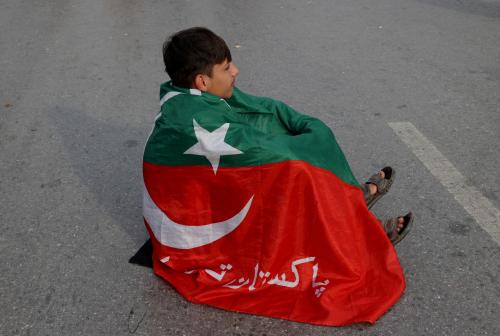
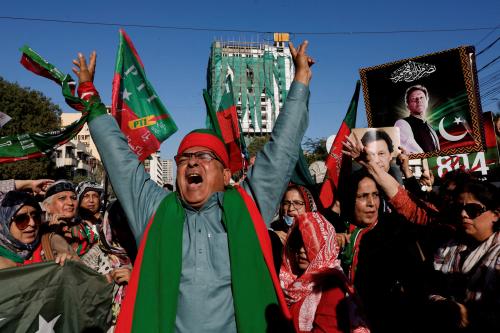
Commentary
Pakistan’s ambivalent approach toward a resurgent Tehrik-e-Taliban Pakistan
February 11, 2022